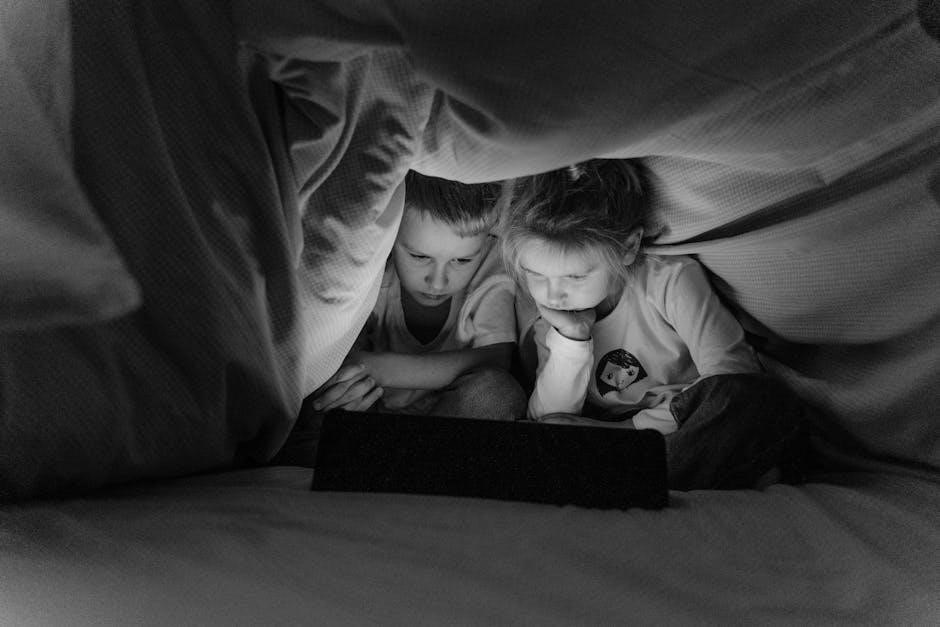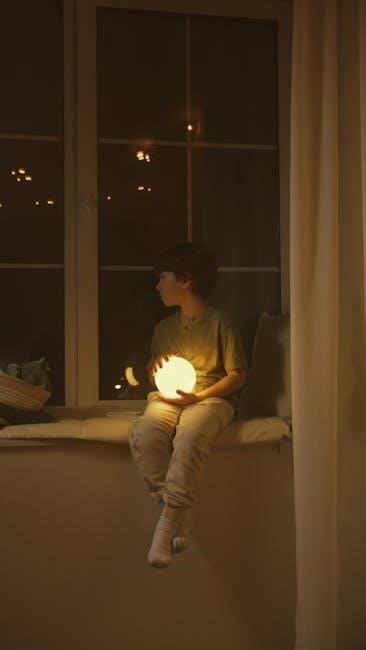
Article Plan: The Boy in the Striped Pajamas PDF
This article will explore John Boyne’s novel “The Boy in the Striped Pajamas,” focusing on its availability in PDF format. We will summarize the plot, discuss historical context, analyze key themes, and review the critical reception of the book.
Overview of “The Boy in the Striped Pajamas”
John Boyne’s “The Boy in the Striped Pajamas” tells the story of Bruno, a young boy who befriends a Jewish boy named Shmuel across a concentration camp fence. It explores innocence during the Holocaust.
Fictional Narrative and Themes
The novel employs a fictional narrative to explore the profound themes of innocence, friendship, and the horrors of the Holocaust through the eyes of a child. Bruno’s limited understanding of the events unfolding around him highlights the stark contrast between childhood innocence and the brutal reality of the concentration camps. His friendship with Shmuel underscores the universal human connection that transcends prejudice and hatred, offering a poignant commentary on the consequences of ignorance and intolerance during World War II. The story serves as a powerful reminder of the importance of empathy and understanding.

Availability of “The Boy in the Striped Pajamas” in PDF Format
The PDF version of “The Boy in the Striped Pajamas” can be found online. It is available for download on various platforms, allowing readers access to the novel in digital form;
Free Download Sources
Several websites offer free PDF downloads of “The Boy in the Striped Pajamas.” These sources include online libraries, digital archives, and platforms dedicated to sharing e-books. Readers should exercise caution when downloading from unfamiliar sites to avoid potential malware or copyright infringements. Always verify the legitimacy of the source before downloading. Some educational platforms may also provide the PDF as part of their learning resources. Checking for authorized distributors can ensure a safe and legal download. Remember to respect copyright laws when accessing digital content.

Characters and Plot Summary
The story follows Bruno, a young boy who befriends Shmuel, a Jewish boy in a concentration camp. The narrative explores their unlikely friendship amidst the horrors of World War II.
Bruno’s Perspective
The novel is primarily told through Bruno’s innocent eyes, offering a child’s perspective on the events unfolding around him. He is largely unaware of the true nature of his father’s work and the concentration camp. Bruno perceives the camp as a strange farm where everyone wears striped pajamas. His naiveté highlights the theme of innocence in the face of unimaginable horror. This limited understanding shapes the reader’s experience and underscores the tragedy of the story, as Bruno’s ignorance leads to a devastating conclusion when he ultimately crosses the fence.

Historical Context
The novel is set during World War II and the Holocaust. This period saw the systematic persecution and murder of millions of Jews. Understanding this history is crucial to appreciating the novel’s themes.
World War II and the Holocaust
World War II (1939-1945) was a global conflict involving the vast majority of the world’s countries, forming two opposing military alliances: the Allies and the Axis; Central to this era was the Holocaust, the systematic, state-sponsored persecution and murder of six million Jews by the Nazi regime and its collaborators. This genocide targeted Jews, Roma, homosexuals, and others deemed “undesirable.” “The Boy in the Striped Pajamas” provides a fictional lens through which to examine the impact of these events, particularly on children, though it is important to understand the actual historical events.
Analysis of Key Themes
The novel explores profound themes such as innocence, ignorance, friendship, and prejudice amidst the backdrop of the Holocaust. These themes are central to understanding the narrative’s impact and its lasting message about humanity.
Innocence and Ignorance
The story is powerfully driven by the innocence of Bruno, a young boy unaware of the atrocities happening around him. His ignorance shields him from the grim reality of the concentration camp, allowing him to form a unique friendship with Shmuel. This naiveté highlights the stark contrast between childhood innocence and the horrors of World War II. Bruno’s limited understanding underscores the broader theme of how ignorance can perpetuate injustice, as he remains oblivious to the suffering inflicted upon others due to his sheltered upbringing and lack of information.
Friendship and Prejudice
Despite the stark differences in their circumstances, Bruno and Shmuel form an unlikely friendship, demonstrating the power of human connection to transcend prejudice. Their bond challenges the prevailing attitudes of hate and discrimination during World War II. The innocence of their friendship reveals the absurdity and cruelty of prejudice, as their connection exists despite the societal barriers designed to separate them. Their relationship underscores the potential for understanding and empathy to overcome deeply ingrained biases, highlighting the destructive nature of prejudice when left unchecked.
Critical Reception and Reviews
The novel has garnered both praise and criticism for its portrayal of the Holocaust through the eyes of a child. Its impact is undeniable, sparking important conversations about historical accuracy and representation.
Impact and Controversy
“The Boy in the Striped Pajamas” has made a significant cultural impact, prompting discussions about the Holocaust and its representation in fiction. The novel’s simplistic and arguably naive portrayal of historical events has stirred controversy among historians and literary critics. Some argue that it trivializes the suffering of victims by presenting an inaccurate depiction of concentration camps. Others claim that it serves as an accessible entry point for young readers to learn about a difficult topic, sparking empathy and encouraging further research. The book’s success has amplified these debates, making it a subject of ongoing discussion.
Educational Use
“The Boy in the Striped Pajamas” is utilized in educational settings to introduce students to the Holocaust. It sparks conversations about prejudice, empathy, and historical awareness, fostering critical thinking on a sensitive subject.
Discussion Points
Classroom discussions surrounding “The Boy in the Striped Pajamas” often revolve around Bruno’s naiveté and his understanding of the events unfolding around him. Educators prompt students to consider the ethical implications of obedience and the dangers of ignorance. They explore themes like friendship and dehumanization.
Students also analyze the author’s choices in portraying the Holocaust through a child’s perspective, debating the effectiveness and potential pitfalls of such a narrative. The novel sparks conversations about responsibility and moral courage.
Film Adaptation
A film adaptation of “The Boy in the Striped Pajamas” was released, bringing the story to a wider audience. The movie visually interprets the novel’s events and themes, offering a different perspective on the narrative.
Differences from the Book
The film adaptation of “The Boy in the Striped Pajamas,” while largely faithful to the novel, includes certain alterations for cinematic effect. Some plot points are condensed, and certain character interpretations are modified to fit the visual medium. These changes, though sometimes subtle, impact the overall narrative experience. The ending, in particular, differs in its portrayal of the aftermath and the emotional impact on the characters. Such variations spark discussion among readers and viewers alike. Adaptations often prioritize visual storytelling, leading to changes in pacing and character emphasis compared to the book.
Sequel: “All the Broken Places”
John Boyne’s sequel, “All the Broken Places,” revisits the story of Gretel, exploring the aftermath of the events in “The Boy in the Striped Pajamas.” The sequel follows Gretel’s life, connecting to the original story.
Connection to the Original Story
“All the Broken Places” serves as a direct sequel, delving into the life of Gretel, Bruno’s older sister, after the events of “The Boy in the Striped Pajamas.” The novel explores how Gretel grapples with her past and the knowledge of her father’s actions during World War II. It provides a deeper understanding of the lasting impact of the Holocaust on individuals and families connected to the Nazi regime. The narrative revisits themes of guilt, responsibility, and the search for redemption, offering a contrasting perspective to Bruno’s innocent ignorance in the original story, enriching the overall narrative.
Author John Boyne
John Boyne is an Irish author known for “The Boy in the Striped Pajamas.” His works often explore themes of innocence, war, and historical events, captivating readers with thought-provoking narratives and compelling characters.
Other Works
Beyond “The Boy in the Striped Pajamas,” John Boyne has written numerous other novels for both adults and young readers. His adult novels include “The Hearts Invisible Furies,” a sweeping tale of identity and acceptance. For younger audiences, he has penned books like “Noah Barleywater Runs Away,” a poignant exploration of grief and imagination. Boyne’s diverse portfolio showcases his versatility as a storyteller, tackling various themes with sensitivity and depth. His work often resonates with readers due to his thought-provoking narratives and well-developed characters, solidifying his place as a celebrated contemporary author.

Symbolism in the Novel
“The Boy in the Striped Pajamas” is rich with symbolism, enhancing its themes. The striped pajamas represent the loss of identity inflicted upon the prisoners, dehumanizing them within the concentration camp setting.
The Fence as a Metaphor
In “The Boy in the Striped Pajamas,” the fence serves as a powerful metaphor, physically separating Bruno from the world of Auschwitz and its horrors. It symbolizes the division between innocence and the harsh realities of the Holocaust. Bruno’s limited understanding prevents him from grasping the fence’s true significance, seeing it merely as a barrier rather than a representation of ideological and physical confinement.
The fence underscores themes of ignorance, prejudice, and the devastating consequences of division. It represents the chasm between the privileged and the persecuted, a gap Bruno unknowingly attempts to bridge.
Download Options and Formats
Many online platforms offer “The Boy in the Striped Pajamas” in various digital formats. These include PDF, often available for download, and Epub, suitable for e-readers, providing accessibility to a wide audience.
Epub Availability
The Epub format of “The Boy in the Striped Pajamas” is widely available, catering to readers who prefer digital books on e-readers. Epub files offer adjustable font sizes and layouts, enhancing the reading experience on devices like Kindles and iPads. These files can often be found on online bookstores, digital libraries, and platforms offering e-books for download. This accessibility ensures that the story reaches a broad audience comfortable with reading in digital formats, allowing for convenient access to Boyne’s impactful narrative.